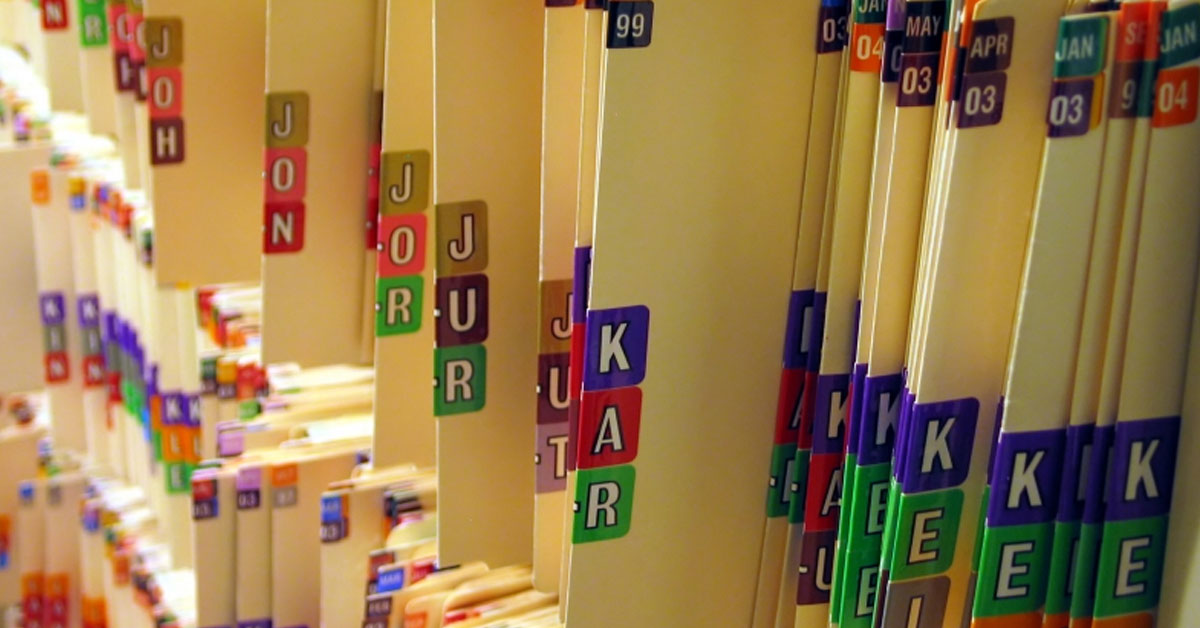
19 Apr Still Using Paper Charts? Why Your Pediatric Office Should Adopt an EHR Now.
In a typical day, how do patient records move through your pediatric office? If you’re still using paper charts, it’s more than like that your administrative staff pulls files for scheduled patients and creates records for new patients. Your nurse or medical assistant probably updates those files with each patient’s vitals. Pediatricians and other clinical staff spend an untold amount of time taking copious notes as they see each patient. Then, each file gets passed back through the nursing team for more updates and back to the administrative staff for payment processing and filing. It doesn’t sound very efficient, does it?
Paper-Based Systems Are a Lot of Work–And Still Create Significant Risks
With a paper-based medical record system, pediatric offices can effectively maintain a tight grip on their patient information. However, it is ultimately slow-moving, inefficient, and at the mercy of human error.
What’s the Worst That Can Happen, Anyway?
One doctor’s bad handwriting can result in misdiagnosis. One admin’s incorrect filing can delay billing. Your pediatric office might not have enough space for the ever-growing paper-based medical record system, requiring additional storage. Something predictable, such as a minor fire, could destroy all of your patient records.
What You’re Missing When You Don’t Have an Electronic Health Record (EHR) System
The leadership of many pediatric offices is afraid of adopting an EHR. They think it’s too expensive. Or perhaps, they once had a bad experience trying to implement a new medical record system, and now they’re resistant to change. The excuses are many and counterproductive.
This fear postpones, if not completely blocks, a pediatric office from ditching an archaic paper-based system, trying a more efficient alternative, and experiencing its benefits. In this article, we will explore some of the advantages your pediatric office could be missing out on.
- A Better Bottomline: Your practice spends thousands of dollars monthly paying staff to transcribe, file, organize, and fastidiously maintain paper records–and then there’s accounts receivable. A pediatric EHR substantially decreases your labor by automating a large number of tasks. For example, it uses digital coding to handle payment processing and patient reimbursement.
- Less Storage: An EHR eliminates the need for file cabinets and office clutter. Your patient records are stored digitally and backed up in the cloud. In addition, this lessens the risk of lost charts.
- Improved Documentation: How many times has one of your administrative staff members wasted a half hour trying to discern what’s written on a patient form? How many times has a critical section of your patient form been handed in without being filled out? An EHR requires every important section of patient forms to be filled out before the patient can complete the check-in process. It also removes handwriting-related issues.
- Seamless Collaboration: An electronic record system allows approved medical professionals at different facilities open up, add comments, and share patient health records. This kind of access results in faster, more accurate diagnosis and treatments.
Are You Still Worried About Converting to a Pediatric EHR? Relax, We’ve Got You Covered.
Are you still concerned with or have questions regarding the benefits of adopting an EHR? Don’t worry. We’ve addressed the top three most common fears pediatric offices face when they consider EHRs. To learn more about those fears and how to overcome them, read our post, Bye, Bye Paper. Hello Technology.
EHRs are the key to streamlining operations, identifying efficiencies and gaps in care, and freeing up valuable time for you and your staff. OP’s pediatric EHR offers features designed to help keep your practice’s financial and clinical operations running smoothly so you can focus on your patients. Contact us today to learn how Office Practicum can help your pediatric practice operate at its best.



